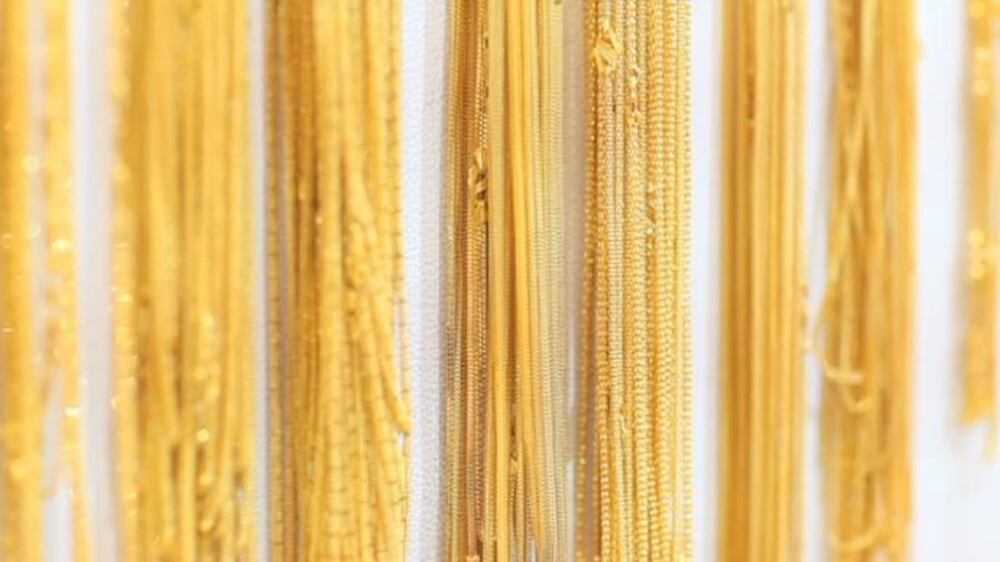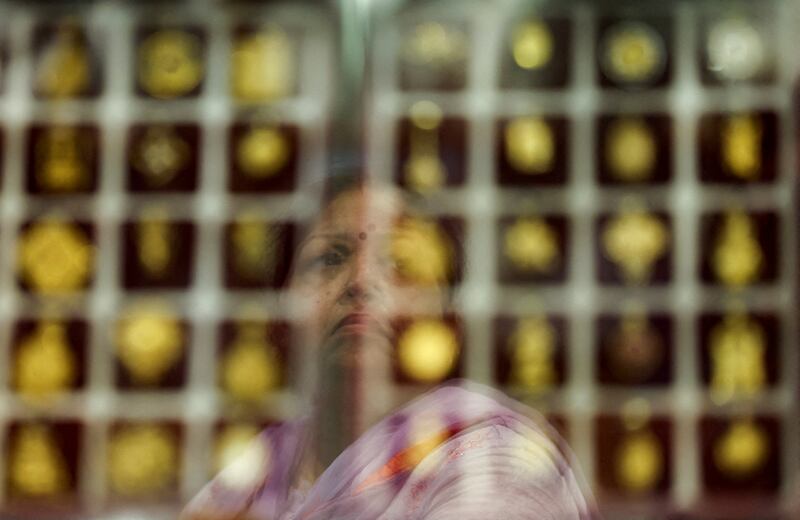Gold has lost some of its lustre in India, with high prices deterring people from buying the precious metal and as other investment options become more appealing, analysts say.
The trend could prove to be a dampener for the festive season – typically a time when Indians like to buy gold in the form of jewellery, bars and coins.
“The demand for gold in India is falling for the last two consecutive quarters and the volume impact on demand is observed both for jewellery and investments,” says Vineet Agrawal, the co-founder of Jiraaf, an alternative investment platform based in Bengaluru.
“The recent stock market rally also challenged the demand for gold as an investment option, with equity markets and alternative fixed-income investments gaining shine and delivering good returns."
Gold prices in India are hovering around 61,000 rupees ($737.75) per 10 grams (0.35 ounce) in Mumbai. That compares to about 53,000 rupees a year earlier.
Rates of the precious metal in India have risen to record highs this year, driven by factors including the broader rise in rates globally – given gold's appeal as a safe-haven asset amid steep inflation and economic uncertainty – and the depreciation of the rupee against the US dollar, which makes gold in India more expensive.
“It would be interesting to view the demand for the pricey metal in the coming days as the festive season is around the corner,” says Mr Agrawal.
India's festive season begins this month and peaks during Diwali, which this year falls in November.
But the recent dip in purchases does not bode well, forecasters say.
The latest data released last week by the World Gold Council shows demand for gold in India in the April to June quarter totalled 158.1 tonnes, down by 7 per cent year on year.
India is the second-largest consumer of gold after China, with the metal holding cultural, social and religious significance, as well as being a popular way of storing wealth – particularly in rural areas where a vast section of the population remain outside the formal financial system.
“Gold has a special value in our society because it is an integral part of our culture, festivities and traditions,” financial influencer Himani Chaudhary says.
Gold jewellery, which accounts for the majority of consumption of the precious metal in India, fell by 8 per cent to 128.6 tonnes during the second quarter, the World Gold Council says.
“This decline can be attributed to the prevailing record high rupee gold prices, which significantly impacted affordability and consumer sentiment,” says Somasundaram PR, the World Gold Council's regional chief executive in India.
Investment demand, meanwhile, was down 3 per cent to 29.5 tonnes.

The World Gold Council is forecasting total purchases of the metal in India will be between 650 and 750 tonnes this year, which would be the lowest since the Covid-19 pandemic affected gold-buying in 2020.
“Looking ahead for rest of the year, we remain cautious about gold demand as it faces uncertainties due to elevated local prices and slowdown in discretionary spending,” says Mr Somasundaram.
“However, the success of the monsoon season could bolster sentiment ahead of Diwali season and throw positive surprises.”
Gold is considered to be auspicious and this makes it an important part of many Hindu festivals.
Raghvendra Nath, managing director of Ladderup Wealth Management, says gold has great appeal in India because it is “a symbol of wealth and status as well as a store of value passed down through generations”.
“Across our varied religious ceremonies and celebrations like birthdays and weddings, gold has been a fundamental part of the proceedings,” he says.
Given all this, he says India's appetite for gold is still robust, despite the current dip in buying, although “the outlook for gold in India in the short-term is somewhat damp”.
Indians are also increasingly looking at other forms of investment, he adds.
“There is no questioning the fact that many individuals are now turning towards alternative options such as real estate, equities, mutual funds and foreign investments to pad up their portfolios,” says Mr Nath.
As the stock markets in India have been scaling record highs and the country's economic growth is proving to be relatively strong, this makes stocks and equity mutual funds attractive to retail investors, he says.
“Investors are also choosing to park a portion of their funds in fixed-income assets,” adds Mr Nath.
Ms Chaudhary says more Indians are realising the “key to receiving higher returns is to diversify their investment portfolio”.
“I won't say that they are favouring any investment but they are definitely venturing into more asset classes,” she says.
At the same time, Indian authorities have in recent years pushed to bring gold into the formal financial system, through the creation of sovereign gold bonds, for example, which include tax benefits.
Along with ETFs and digital gold, this means there are more investment options for the precious metal, says Niyati Mavinkurve, the co-founder of YouTube channel Let's Make You Rich.
“Gold will never go out of fashion in India,” she says.
VIdeo: India's gold import duty hike

But the near-term outlook for demand in India will be determined by several factors.
Shavir Bansal, founder of BeKifaayati, a financial services company, says “gold is often seen as a hedge against inflation, and with inflation rates rising in India, there could be increased demand for gold as a way to protect against currency devaluation”.
But he adds that “a stronger dollar could make gold more expensive for buyers in India, which could dampen demand” and “if equity markets continue to rise, investors may be less likely to invest in gold”.
Although momentum may have taken a hit due to high prices, jewellers in India remain hopeful of a rush of customers picking up gold during the festive season.
Parth Khanna, a jewellery designer at DRK Jewels in New Delhi, says there has been some appetite for gold in recent months from customers who wanted to exchange their 2,000 rupee notes, which were withdrawn from circulation in May, for the metal.
“Now it’s the beginning of the festive month, a lot of clients are keen on buying the gold jewellery,” he says.
MP Ahammed, chairman of Malabar Group, the parent company of Malabar Gold & Diamonds, says “the elevated gold price and cautious approach towards discretionary spending have kept the demand subdued [as] price-sensitive customers are trying to come to terms with the higher gold prices”.
“However, we expect a revival in gold jewellery demand and consumer sentiment on the onset of the festive season,” he says.
The weather could also have a significant role to play in the amount of gold that Indians purchase over the coming months.
“Good monsoon rains, which are vital for agricultural earnings, can spur gold demand in rural areas,” says Prithviraj Kothari, managing director and chief executive of RiddiSiddhi Bullions Ltd.
While Indians may have slowed down on gold-buying, he does not believe the precious metal has lost its lustre.
“Despite the high prices, the strong cultural affinity, historical performance and emotional significance of gold continue to attract Indian investors to consider gold as a part of their investment portfolio,” says Mr Kothari.






